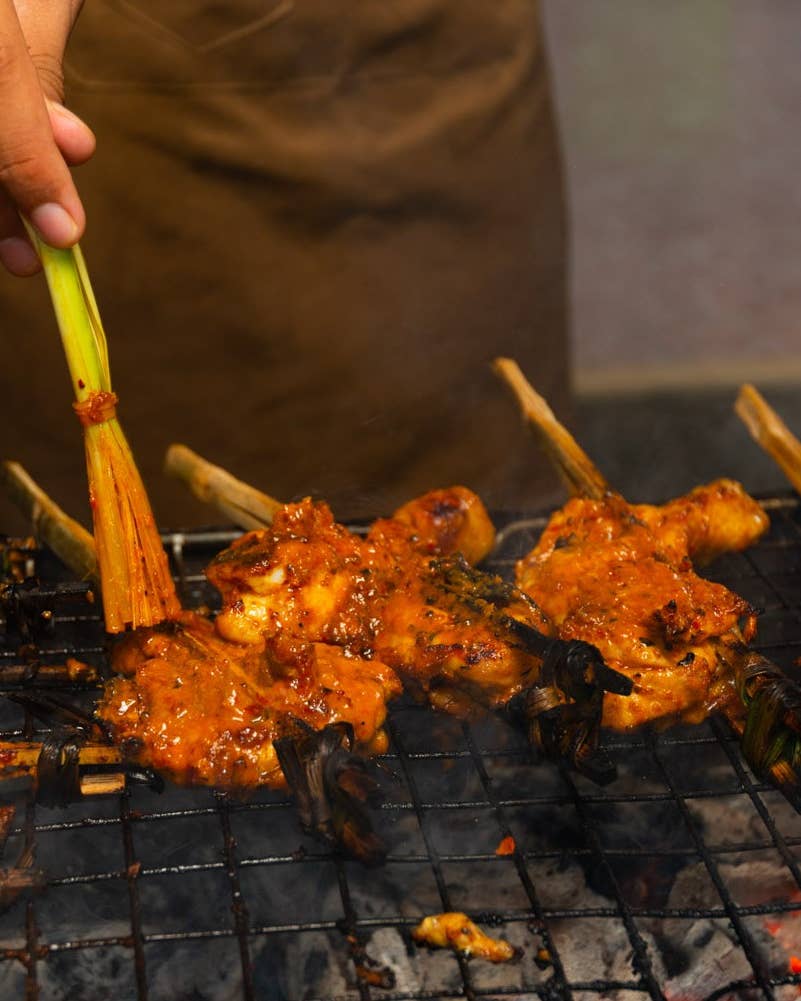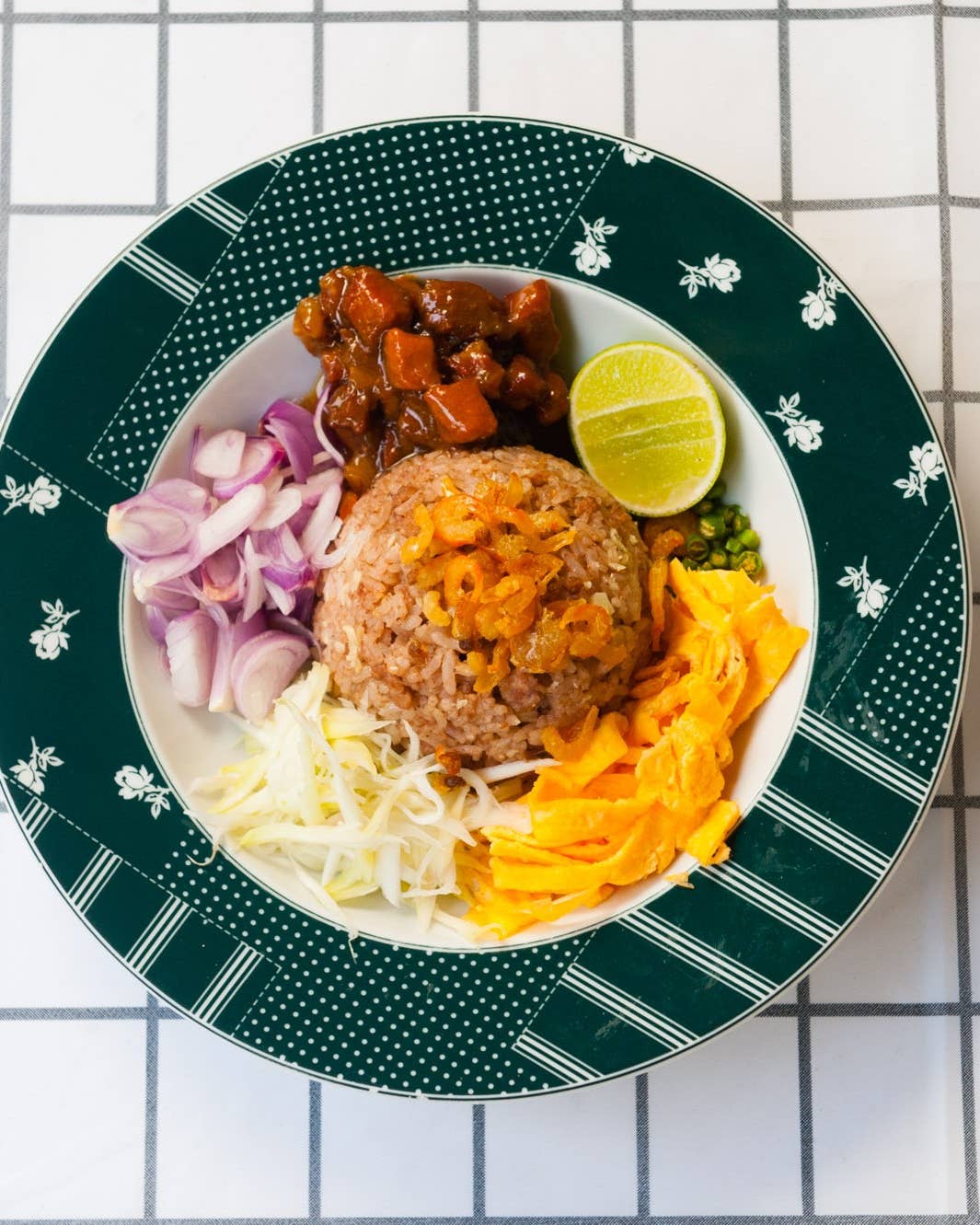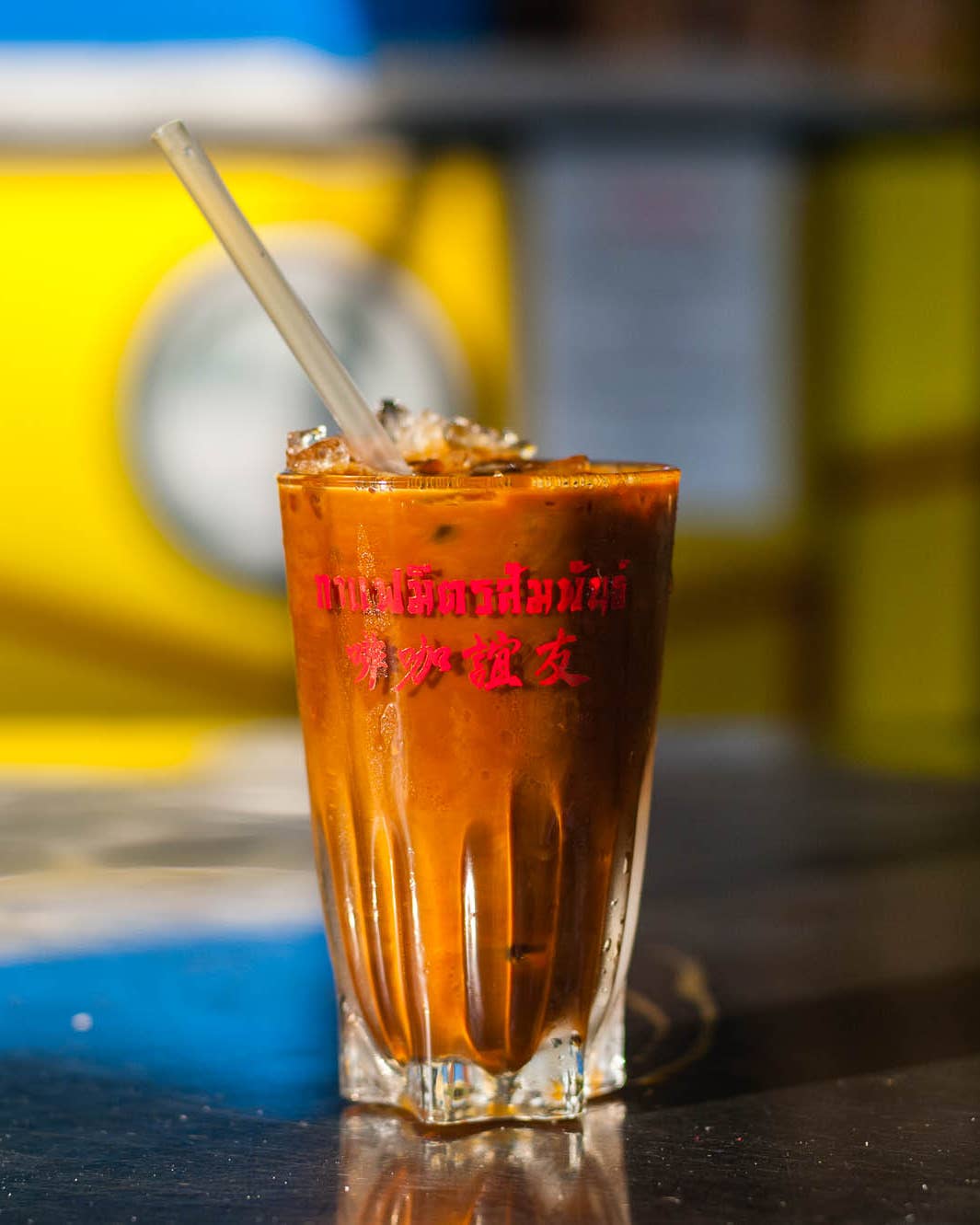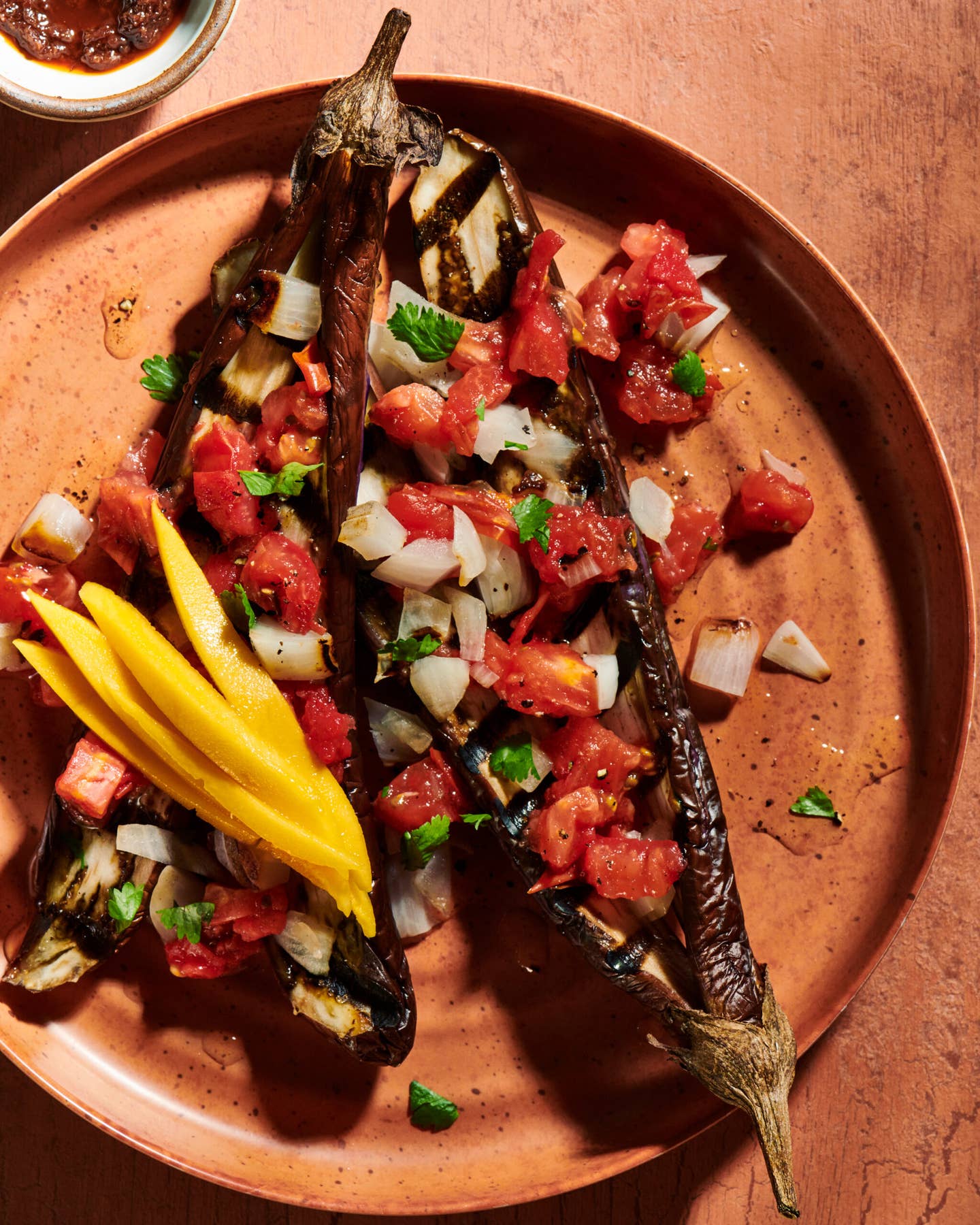Thai Fried Chicken
Straight from the street vendors of Hat Yai, kai thawt haat yai is served with crispy shallots, sticky rice, and a dynamite dipping sauce.
- Serves
4
- Cook
1 hour 30 minutes
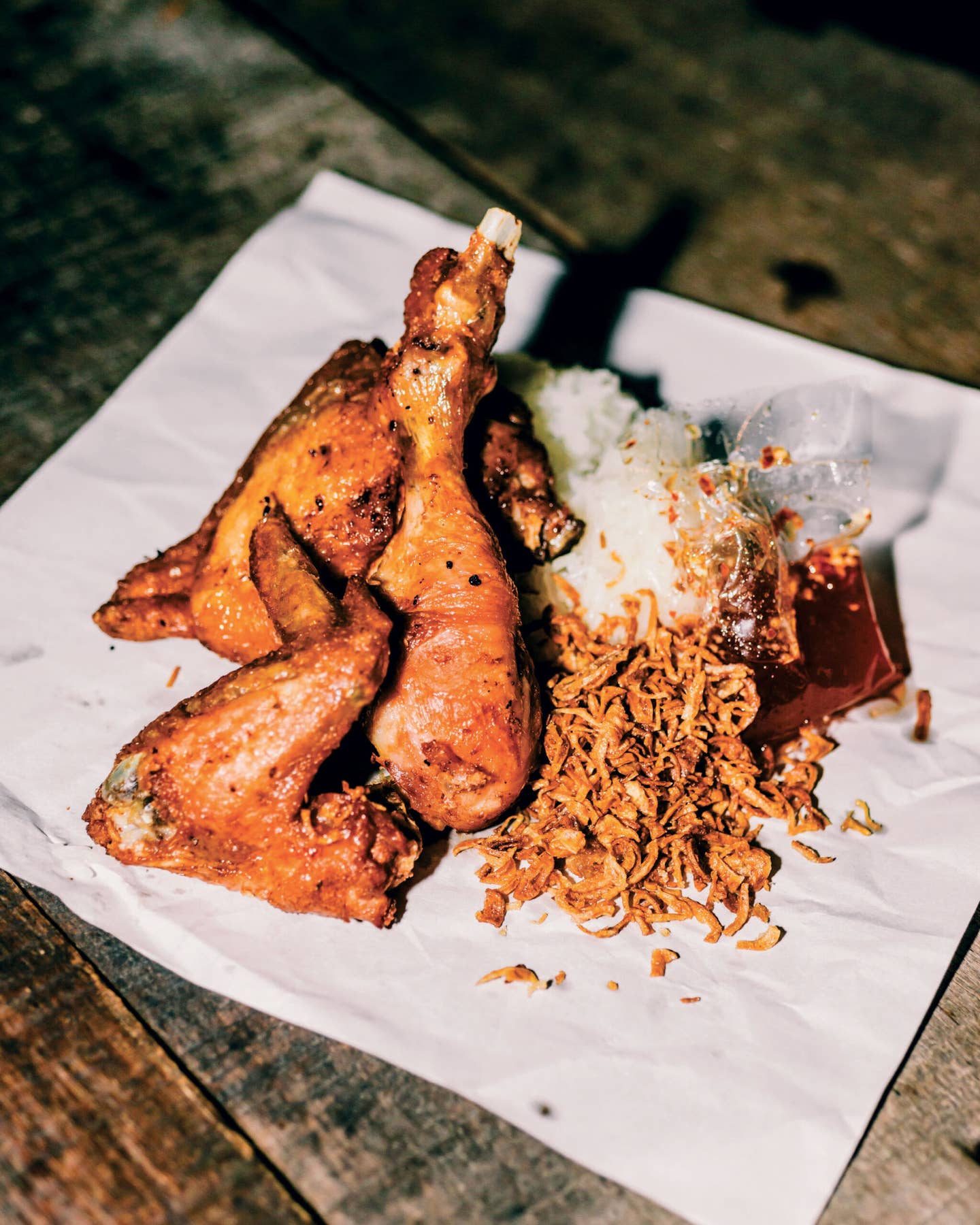
This recipe is brought to you by the SAVEUR Cookbook Club, our passionate community of food-loving readers from around the globe celebrating our favorite authors and recipes. Join us as we cook through a new book every month, and share your food pics and vids on social media with the hashtags #SAVEURCookbookClub and #EatTheWorld.
Near Thailand’s border with Malaysia, street vendors in the landlocked city of Hat Yai have perfected the art of fried chicken. This recipe for kai thawt haat yai infuses the chicken with flavor via a deeply savory brine of garlic, coriander seeds, sugar, soy sauce, and an optional—but highly recommended—dash of MSG. After frying in palm oil, what emerges is a sticky-sweet, bright orange, and irresistible taste of Southern Thai cuisine. Accompanied by a spicy-sweet dipping sauce and crispy fried shallots, and eaten in alternating handfuls with sticky rice, this is a dish that captures the vibrancy of the region.
Elements of this recipe can be easily adapted to fit taste and preparation preferences. The chicken can be a combination of bone-in cuts (though if using thighs and/or breasts, Bush suggests halving the pieces for easier frying). The MSG is easy to omit if needed, but Bush cautions that the dish will be missing some of its distinct flavor and bright orange color. Palm oil will allow for frying the chicken at a lower heat (and thus resulting in a crispier product), but you can also use vegetable oil. Glutinous sticky rice is traditionally made in a Thai-style pot and bamboo basket, but this recipe calls for steaming in a fine-mesh sieve with cheesecloth. Best of all, each element of the dish can (and should) be prepared in advance, making this an ideal make-ahead feast.
Adapted from The Food of Southern Thailand. Copyright © 2024 by Austin Bush. Used with permission of the publisher, W.W. Norton & Company. All rights reserved.
Featured in “Decades of Travel Inform This Guide to Southern Thai Cooking” by Jessica Carbone.
Ingredients
For the chicken:
- 1 heaping cup garlic cloves, peeled and smashed
- ⅓ cup sugar
- ¼ cup coriander seeds
- 2 Tbsp. plus 2 tsp. fine salt
- 2 Tbsp. plus 2 tsp. light soy sauce
- 1 Tbsp. plus 1 tsp. MSG, optional (see headnote)
- 2 tsp. freshly ground white pepper
- 4½ lb. bone-in, skin-on chicken pieces
- 4 cups palm oil, or vegetable oil
For the fried shallots:
- 6–8 shallots (8 oz.), thinly sliced lengthwise
- ½ tsp. fine salt
- 4 cups palm oil, or vegetable oil
For the dipping sauce:
- ½ cup fresh red Thai chiles
- ⅓ cup garlic cloves, peeled
- 1 tsp. fine salt
- 1 cup sugar
- ¼ cup plus 2 Tbsp. white vinegar
- 1 tsp. tapioca starch
For the rice:
- 2¼ cups Thai sticky rice (also called glutinous rice or sweet rice)
Instructions
Step 1
Step 2
Step 3
Step 4
Step 5
Step 6
Step 7
Step 8
Step 9
Step 10
Keep Reading
Continue to Next Story
